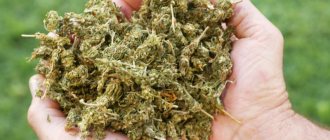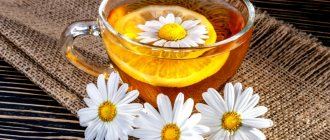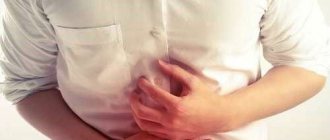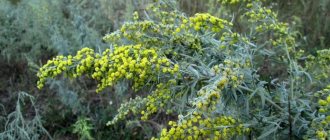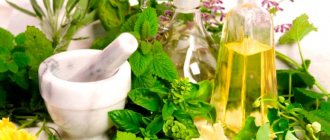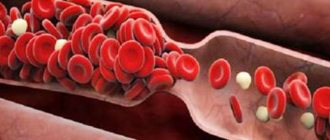Despite the abundance of modern and effective remedies of various profiles, many prefer to be treated the old fashioned way - using folk recipes.
Choleretic herbs are especially popular. They are actively used for cholecystitis, drunk for hepatitis, and recommended for biliary dyskinesia. Herbal medicine, indeed, can be used during therapy, but only as part of a complex in parallel with taking traditional pharmaceuticals.
List of choleretic herbs
What herbs are choleretic? This list is familiar to everyone from childhood, since they grow in large numbers in Russia, Ukraine and Belarus. This list includes the following:
- elecampane tall;
- calendula;
- mountain arnica;
- calamus root;
- sandy immortelle;
- goose cinquefoil;
- nettle;
- common dandelion;
- corn silk;
- milk thistle;
- wormwood;
- tansy;
- celandine;
- peppermint;
- yarrow;
- rose hip;
- knotweed;
- centaury;
- spikelet lavender;
- coltsfoot;
- common toadflax;
- blue cornflower;
- Melissa;
- barberry;
- medicinal angelica;
- long turmeric.
The great advantage of plants is their availability. The preparations can be purchased at a pharmacy or prepared independently at home. For each component from the list of choleretic herbs, there is a certain period of time when they can be collected. Basically it lasts from June to August, and they need to be dried on a smooth surface, preferably in the shade.
What are choleretic herbs for?
As mentioned above, almost all medicinal plants have many different properties. Therefore, the list of choleretic herbs for bile stagnation is conventionally divided into several groups. They combine plants with similar qualities.
1. Increase muscle tone. This group of plants contracts the muscles of the liver and gallbladder, allowing bile to flow into the intestines. The collection of such herbs is strictly contraindicated for patients suffering from cholelithiasis, as this can lead to blockage of the bile ducts.
2. Thinning agents. This group accumulates water in the body, which dilutes bile and promotes its removal.
3. Improving the quality of bile. Choleretic herbs of this group help improve the composition of bile, and also determine its proper production and timely release. These preparations contain many useful substances - acids, flavonoids, vitamins of various groups, tannins and much more. Thanks to their influence, the functioning of the liver and gall bladder returns to normal.
4. Antispasmodic. The list of choleretic herbs in this group has analgesic properties, helps relax the gallbladder muscle, this increases the volume of bile released. The list of antispasmodic plants necessarily includes dandelion.
Quite often, during treatment it is necessary to solve more than one health problem, since digestive disorders entail many troubles. It is for this purpose that treatment fees are compiled.
Choleretic herbs after gallbladder removal
Surgery to remove the gallbladder, or cholecystectomy, is performed when the organ does not respond to medication. After the procedure, the patient must follow diet No. 5. To prevent stagnation of bile in the ducts, it is recommended to take the following choleretic herbs when the gallbladder is removed:
- Corn silk.
- Knotweed or bird knotweed. Prevents recurrent stone formation, acts as a strong antiseptic. Do not use during pregnancy, thrombophlebitis, diseases of the bladder and kidneys.
- Milk thistle improves liver function. Diseases for which it should not be used: hepatic and renal colic, diarrhea, pancreatitis, individual intolerance.
When should and should not be taken
Choleretic herbs, the list of which was provided above, are used to treat the following ailments:
- Pancreatitis. This is a very serious and dangerous disease. The pancreas produces many different enzymes that are necessary for normal digestion. When the inflammatory process begins, these enzymes do not enter the intestines and affect the gland itself. As a result, the cells of the organ are affected, and bile in this case often enters the pancreatic duct. The medicinal collection reduces the inflammatory process and helps normalize digestion.
- Cholecystitis is inflammation of the gallbladder. In this case, bile is not removed from the organ; it stagnates in it, provoking the development of pathogenic microflora and inflammatory processes.
- Biliary dyskinesia. In this case, the activity of the gallbladder and the motility of the biliary tract are disrupted. Most often, women suffer from this disease.
- Giardiasis - the cause of this disease is invasions that parasitize the small intestine. The collection of choleretic herbs promotes the active removal of bile into the small intestine, which is detrimental to parasites.
Medicinal infusions and decoctions reduce the load on the liver, activate gastrointestinal motility, and cleanse it of toxins. But, despite all the benefits, folk remedies can also cause harm, so consultation with a specialist is necessary. All choleretic herbs from the list are prohibited in the following cases:
- viral hepatitis;
- biliary colic;
- calculous cholecystitis;
- acute liver intoxication.
With such contraindications, it is better to choose an alternative treatment.
Herbs for bile stagnation
In the treatment of each disease there are specific features of the use of choleretic herbs. Poor outflow of bile causes a person to experience pain under the right rib and bitterness in the mouth. If treatment is not timely, stagnation of bile can lead to the formation of gallstones. In this case, the following herbs are used:
- Dandelion - a decoction of the roots is usually made; it has a pronounced anti-inflammatory and diuretic effect. Reception is prohibited if there are gallstones, colitis, gastritis and hemorrhoids.
- Birch leaves - relax the bile ducts, eliminate spasms, relieve inflammation. Use during pregnancy is only possible with a doctor's permission.
- Corn silk - has the ability to prevent disease at an early stage. Prohibited for varicose veins, thrombosis and gallstones.
Names of herbs recommended for gallbladder inflection
An inflection is a special anomaly associated with a change in the shape of an organ. This congenital feature leads to disruption of the gastrointestinal tract, poor digestion, pain, bitterness, and nausea.
Table 3. Choleretic herbs recommended for gallbladder kinks
| Name of choleretic herb | Detailed information |
| Artichoke | The most powerful hepatoprotector and stimulator of bile secretion. Used for cirrhosis, hepatitis, cholecystitis. Recommended when bending as a prevention of stone formation |
| Hop cones | Considered a strong anti-inflammatory agent with a bactericidal effect |
| Dandelion | Recommended for pathologies localized in the liver and bladder. Fights spasms, relieves inflammation, strengthens and heals the body |
The anatomical feature cannot be cured. It requires special attention to your own health, regular preventive measures and timely intervention.
Types of gallbladder kinks
Choleretic herbs for bile stagnation and dyskinesia
This disease is caused by a violation of the motor activity of the muscles of the gallbladder and biliary tract. In this case, the following plants are prescribed:
- Angelica is especially effective when combined with mint leaves, sage and caraway fruits. Herbs are taken in equal proportions.
- Horseradish - an alcohol tincture is prepared from the fresh leaves of the plant; it is also effective for some liver diseases.
- Choleretic collection - components are taken in the following proportions: 1 tbsp. lemon balm spoon, 2 tbsp. spoons of buckthorn bark, immortelle flowers and peppermint, 5 tbsp. spoons of fresh or dried rose hips. Mix all ingredients and brew like regular tea. A good addition is fresh natural honey.
Choleretic fees
Plants are used individually for treatment, but cholekinetic compositions consisting of several components are more often used. They are selected based on many years of research. Popular choleretic herbs (or phytohepatols) include:
- No. 1. Contains: immortelle - 4 parts, peppermint, coriander seeds, trifoliate - 2 parts each. Suitable for the treatment of cholecystitis, cholangitis, hepatitis.
- No. 2. Contains: immortelle – 40%, mint, yarrow, dandelion – 20% each. Used to stimulate the outflow of bile after gall bladder surgery.
- No. 3. The drug contains: tansy – 8%, calendula, mint, yarrow – 23% each. Prescribed for chronic cholangitis, cholecystitis, biliary dyskinesia.
Use 2-3 times/day, ½ cup of infusion 20-30 minutes before meals. The advantage of pharmaceutical drugs is that they are inexpensive, sold in sachets, and have instructions with a detailed description of the composition and contraindications. At home, herbs are measured by eye. To prepare, you need to pour 2 tbsp. l. collect 0.5 liters of boiling water, let it brew for an hour.
Herbs for gallstones
With such a diagnosis, treatment should be treated more than carefully, since it is no longer possible to take preparations that have diuretic properties. This can cause stones to shift, blockage of the ducts and injury.
Prescriptions in this case should be made only by a doctor. The most effective are infusions from:
- Marsh calamus, combination with immortelle and St. John's wort gives good results.
- Bitter wormwood. For this diagnosis, you can use both a decoction and an alcohol tincture. Effectively combined with horsetail, it is not recommended for people suffering from stomach ulcers and obesity.
- Peppermint. Helps reduce the size of the stone or dissolve it. The effect is enhanced in combination with lemon balm and chamomile. Do not take if you have high blood pressure, breastfeeding or individual intolerance.
Pharmacy herbal preparations
All components from the list of choleretic herbs for bile stagnation and other diseases of this organ can be purchased at the pharmacy and collected independently. You can also buy ready-made herbal teas, which contain many plants and have a complex effect.
1. Choleretic collection No. 1. It includes trifoliate, mint, coriander, immortelle. Infusion No. 1 eliminates inflammation, activates the digestive system, relieves muscle spasms from the gallbladder and ducts, increases tone, and has choleretic and analgesic properties. Proper preparation of the decoction is very important for treatment. It is prepared like this: place about 10-20 g of the collection in an enamel container and pour a glass of hot, but not boiling water. Place in a water bath and simmer for 15 minutes. Then remove the broth from the heat and cool for 45 minutes, strain and drink 1/3 cup three times a day before meals. The duration of treatment is determined by the doctor.
2. Choleretic collection No. 2. Contains immortelle, mint, yarrow and coriander. The decoction is prepared and taken in the same way as collection No. 1.
3. Choleretic collection No. 3. Consists of mint, yarrow, tansy, calendula and chamomile. The combination of these herbs has a calming effect and promotes the removal of bile from the bladder, relieves inflammation, and has antimicrobial properties. The collection is available in bags and is prepared as follows: pour 1-2 bags with a glass of boiling water and leave for 15-20 minutes. Choleretic tea should be drunk from 300 to 600 ml per day.
Plants with a pronounced choleretic effect
Let's consider plants in which the choleretic effect is most pronounced.
Immortelle
In herbal medicine, immortelle flowers are considered a very powerful choleretic agent. They stimulate hepatocytes to produce bile, affect its chemical composition (increase the percentage of cholates, bilirubin, dilute it). They have a cholekinetic effect on the gallbladder, improving its contraction, and relieve spasm of the ducts and sphincters. In addition to its beneficial effect on bile secretion, immortelle improves the digestion of food in the stomach, activates the secretion of pancreatic juice and intestinal function.
Corn silk
An infusion of corn silk is effective for inflammation of the gallbladder, hepatitis, and cholelithiasis. Like immortelle, it has choleretic properties - it stimulates the production and reduces the lithogenic properties of bile, improves its outflow, thereby cleansing the blood of excess bilirubin and cholesterol.
St. John's wort
The choleretic effect of this plant is successfully combined with anti-inflammatory, antimicrobial, hepatoprotective, antispasmodic, and regenerating properties. St. John's wort is included in preparations for bile duct dyskinesia, as it perfectly relaxes spasmodic areas. The infusion of the herb has a beneficial effect on the condition of the entire digestive tract and cleanses the liver.
Calendula
In gastroenterological preparations, calendula flowers are used as a strong anti-inflammatory agent. The plant also has choleretic, antimicrobial, antibiotic effects, increases the secretory activity of not only the liver, but also the stomach and pancreas.
Elecampane
The choleretic properties of elecampane are provided by the substance inulin, the content of which in the roots reaches 40%. By stimulating digestion, it activates the production of bile and its release into the duodenum. In addition, inulin has a beneficial effect on the liver and accelerates the healing of stomach and duodenal ulcers. It is used as a prebiotic to improve intestinal microflora.
Mint leaves
Essential oils of the plant stimulate the secretory function of the digestive organs, including bile formation. Menthol relaxes the walls of the ducts, improving its outflow from the gallbladder, and has an antimicrobial effect.
nettle leaves
A plant with a rich chemical composition can influence metabolic processes and enhance the secretion of many enzymes. Thanks to vitamins and iron, it normalizes lipid metabolism and reduces the lithogenic properties of bile (tendency to stone formation). Nettle extract is part of the well-known choleretic drug Allohol.
All plants with yellow flowers are considered choleretic in herbal medicine.
The number of plants with a choleretic effect is in the dozens. The list goes on - tansy, yarrow, lingonberry leaves, rose petals, centaury, lavender, etc.
How to choose choleretic tea?
Sometimes an infusion of one of the above herbs is prescribed as a choleretic agent. But more often it is recommended to use complex preparations, such as “Fitolex choleretic” from the manufacturer SOIK LLC. With regular use, herbal tea restores optimal bile secretion, regulates its viscosity and chemical composition, increases spasticity of the gallbladder and ducts, and improves digestion. However, before using any drugs, conventional or natural, you should definitely consult with your doctor in order to take into account all the nuances of administration, compatibility and not harm your health.
<<All articles in this section
Reviews
Many people are skeptical about traditional medicine, considering it a waste of time. But unconventional treatment also has many adherents who are confident that thanks to the generosity of Mother Nature, any ailment can be cured. Indeed, as world practice shows, very often folk remedies become a more effective and safe alternative to drug therapy.
It is impossible to predict in advance which herb will be the most effective. That is why experts recommend using fees that have a versatile effect. During treatment, you should remember that the choleretic tea is not a tea, and therefore it should be taken only as prescribed by a doctor.
Be healthy!

